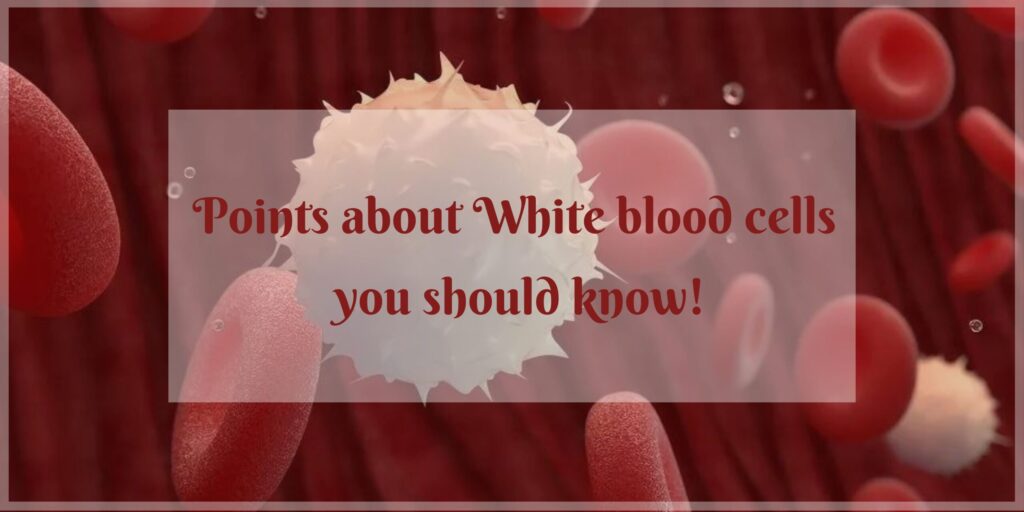Functions of white blood cells
The functions of white blood cells and their types are expounded in detail in this post. White blood cells are anti-infectious cells that are components of your immune system and, often referred to as leukocytes are in charge of defending your body against illness. These cells travel through your blood and tissues, fighting any unknown germs that infiltrate your body in response to damage or sickness. White blood cells circulate in the bloodstream, where they pass through blood vessel walls and tissues, searching for the source of infection. Contrary to their name, white blood cells are colourless, but when studied under a microscope and dyed, they would look like a light purple to pink tint. These tiny cells have a spherical shape with a definite membrane at the centre called the nucleus. Because white blood cells are so minute, they can only be seen under a microscope. White blood cells make up 1% of your blood; however, you have more red blood cells than white blood cells in your body.
Facts about white blood cells
The soft area inside your bones, called bone marrow, is where white blood cells are formed. There are two types of white blood cells: T Cells that grow in the thymus gland and B Cells that grow in the lymph nodes and spleen. The functions of white blood cells comprise safeguarding your body from illness. White blood cells arise from stem cells in the delicate flesh of your bones called bone marrow, which change into various cells in the body. HIV/AIDS, Vitamin B12 deficiency, Chemotherapy-induced drug exposure, Leukaemia-induced bone marrow failure, and Aplastic Anaemia-induced bone marrow failure are all causes of low white blood cell counts. Low white blood cells are diagnosed by a blood test with less than 4,000 cells per microliter of blood. Allergies, Leukaemia or Hodgkins disease, and physical injury or stress are all causes of a high white blood cell count. They also include sepsis, a bacterial illness, as well as TB and mononucleosis, both of which are viral diseases. Autoimmune diseases such as lupus and rheumatoid arthritis are also included. High white blood cells are diagnosed by a blood analysis with more than 11,000 cells per microliter of blood.
Types of white blood cells
Monocytes, Basophils, Eosinophils, Lymphocytes, and Neutrophils are the five kinds of white blood cells. The functions of white blood cells entail moving through your circulation and tissues, locating the origin of infection and acting as an army general, notifying additional white blood cells of their position to aid in defence of your body against an unknown organism’s onslaught. Monocytes protect the body against infection by removing damaged cells, and Basophils cause allergy symptoms such as coughing, sneezing, or a runny nose. Eosinophils are responsible for identifying and destroying parasites and cancer cells, as well as assisting basophils in allergic reactions. Lymphocytes are made up of T cells, natural killer cells, and B cells that guard against viral infections and create proteins called antibodies that aid in the fight against infection. By destroying bacteria, fungus, and foreign debris, neutrophils help defend your body from infection. White blood cells, which are part of our immune system, have been linked to various brain illnesses, including multiple sclerosis, Alzheimer’s, Parkinson’s, and stroke.
The most prevalent diseases and illnesses affecting white blood cells
Infections are more common if you possess a low white blood cell count, which is known as leukopenia. You might have an infection or an underlying medical disease such as leukaemia, lymphoma, or an immunological problem if your white blood cell count is abnormally high, which is known as leukocytosis. The functions of white blood cells encompass combating the intruder by creating antibody proteins that adhere to and kill the invader. A chronic cough or trouble breathing, numerous infections, a red, bloated wound that oozes pus, or won’t heal, fever, body pains, and chills are all symptoms of white blood cell problems where your count is too high or too low. Every day, your body produces around 100 billion white blood cells, and the number of white blood cells in a microliter of blood is calculated following the completion of a blood draw test. 4,000 to 11,000 white blood cells per microliter are considered typical in a human body. White blood cell abnormalities are treated differently depending on the diagnosis and intensity of the problem. Treatment options include stem cell transplantation, blood transfusions, bone marrow replacement or repair surgery, antibiotics, and vitamin supplementation. You can look after your white blood cells by addressing medical diseases with side consequences of white blood cell abnormalities. You may also protect your WBC by consuming vitamins to strengthen your defensive system, eating a healthy diet, and maintaining proper hygiene to avoid infection.



